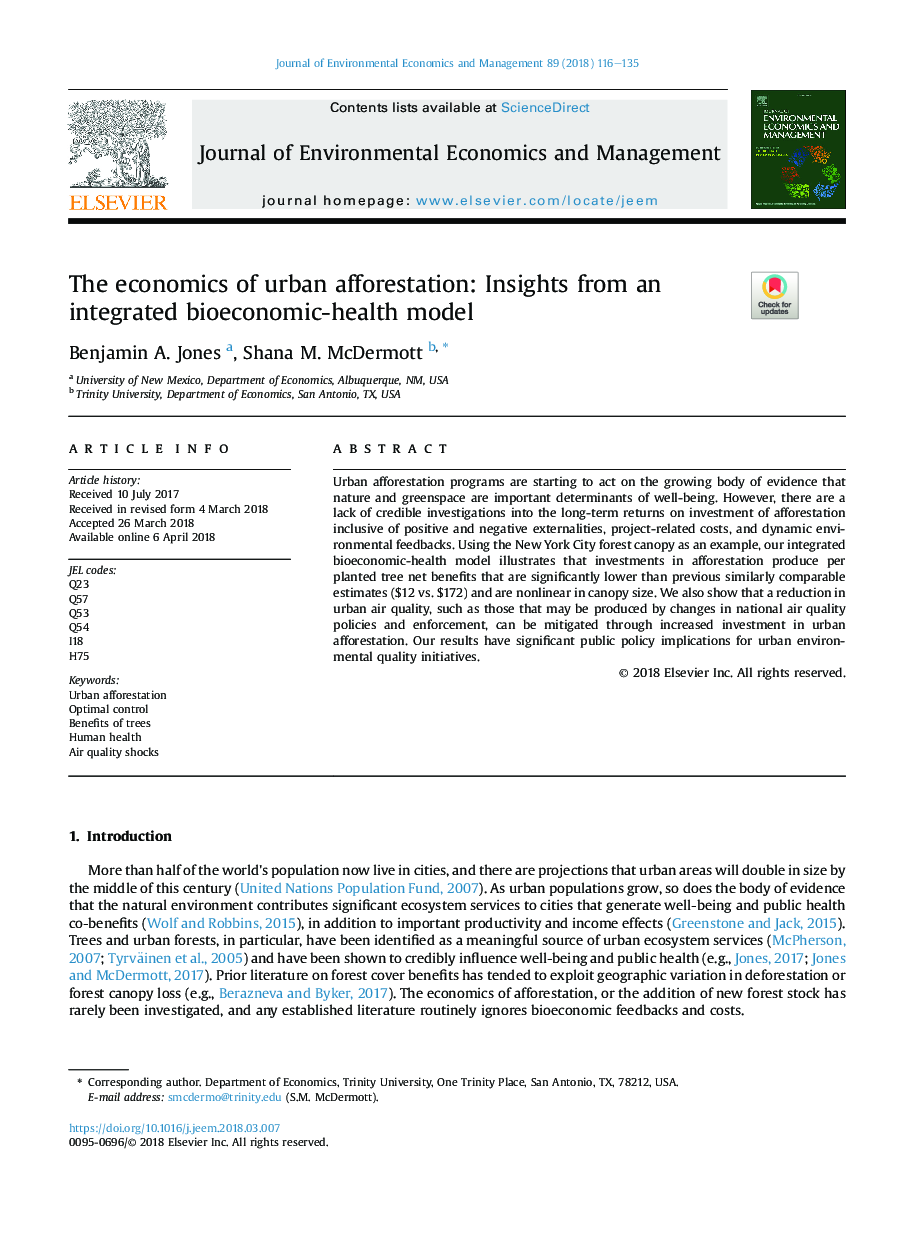| Article ID | Journal | Published Year | Pages | File Type |
|---|---|---|---|---|
| 7361299 | Journal of Environmental Economics and Management | 2018 | 20 Pages |
Abstract
Urban afforestation programs are starting to act on the growing body of evidence that nature and greenspace are important determinants of well-being. However, there are a lack of credible investigations into the long-term returns on investment of afforestation inclusive of positive and negative externalities, project-related costs, and dynamic environmental feedbacks. Using the New York City forest canopy as an example, our integrated bioeconomic-health model illustrates that investments in afforestation produce per planted tree net benefits that are significantly lower than previous similarly comparable estimates ($12 vs. $172) and are nonlinear in canopy size. We also show that a reduction in urban air quality, such as those that may be produced by changes in national air quality policies and enforcement, can be mitigated through increased investment in urban afforestation. Our results have significant public policy implications for urban environmental quality initiatives.
Related Topics
Social Sciences and Humanities
Economics, Econometrics and Finance
Economics and Econometrics
Authors
Benjamin A. Jones, Shana M. McDermott,
